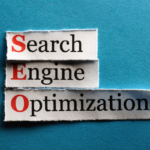Google recently announced a release of a new Artificial Intelligence (AI)-powered Google Analytics 4. Marketers everywhere are depending on insights for tracking successes and determining the best Return on Investment (ROI) for their marketing budgets. Insights from digital analytics tools are more critical than ever before. The smarter version of Google Analytics is being billed as offering better insights while being privacy-centric to meet upcoming changes to restrictions on cookies or other identifiers. Google Analytics 4 builds on the beta release of App + Web property that Google launched in July 2019.
Improvements Promised with Google Analytics 4
GA4 is about to become the default option for tracking with any new website setup. Universal Analytics will continue to run, but Google is recommending the addition of GA4 to run them side by side. Moving forward, Google will plan to develop new features for GA4, expecting marketers to shift in that direction. Here are the benefits offered so far:
Better Predictions: Analytics has already offered an AI insights option, but the new machine-learning insight capabilities have improved. They can alert marketers to sales trends and predict outcomes, like Lifetime Value (LTV) estimates for customer segments.
Customer Journey Indications: The newest version of GA is organized around the customer lifecycle with tools for digging deeper into aspects of the customer’s journey. It measures entire end-to-end journeys on all devices and channels, not just individual page metrics. The goal is to help marketers understand how customers are interacting with the business and whether they are loyal after conversions. Everything in GA4 is centered around “events”, and the “Life Cycle Report” shows a visual picture of the customer journey that was previously only available on Analytics 360.
Future Prepared: With changes in privacy demands for data collection, GA4 is designed to work without storing cookies or data for personal identification. After changes in iOS privacy and Safari ITP cookie storage restrictions, this is a big concern for many marketers that rely on vision across all device types. GA4 uses machine-learning to fill data gaps and mixes data types without storing a user ID. The combination offers a clearer picture that skirts those privacy concerns, providing long-term reliability.
Faster Tracking: Since data has been expanded with codeless event tracking, marketers can measure on-site or in-app actions (i.e., page scroll) in real-time. Universal Analytics typically required processing that made detailed data not fully available until the next day.
Improvements for Google Ads: We can expect a new Google Analytics version to offer better insights for Google Ads. GA4 provides better tracking across the site, app, and other platforms (like YouTube), allowing marketers to exclude or retarget users based on actions across more channels.
Greater Control: The newest Google Analytics will allow marketers to alter their results and fine-tune tracking without editing on-site code. With cross-domain tracking, marketers will have a clearer picture of user events on a much broader scale for a much clearer customer journey picture.
There is no indication of when Google plans to depreciate Universal Analytics. The encouragement to run Universal and GA4 side by side seems a clear indicator that Google is planning to shift over to the new version. As of now, marketers are not required to shift to the new version, although all new properties will default to GA4. This gives marketers some time to adjust to the new user interface and understand the new way data is displayed. Expect data on both versions to look different and not align perfectly due to how the data is collected and measurements are calculated.





 8055 E Tufts Ave Ste 240
8055 E Tufts Ave Ste 240




